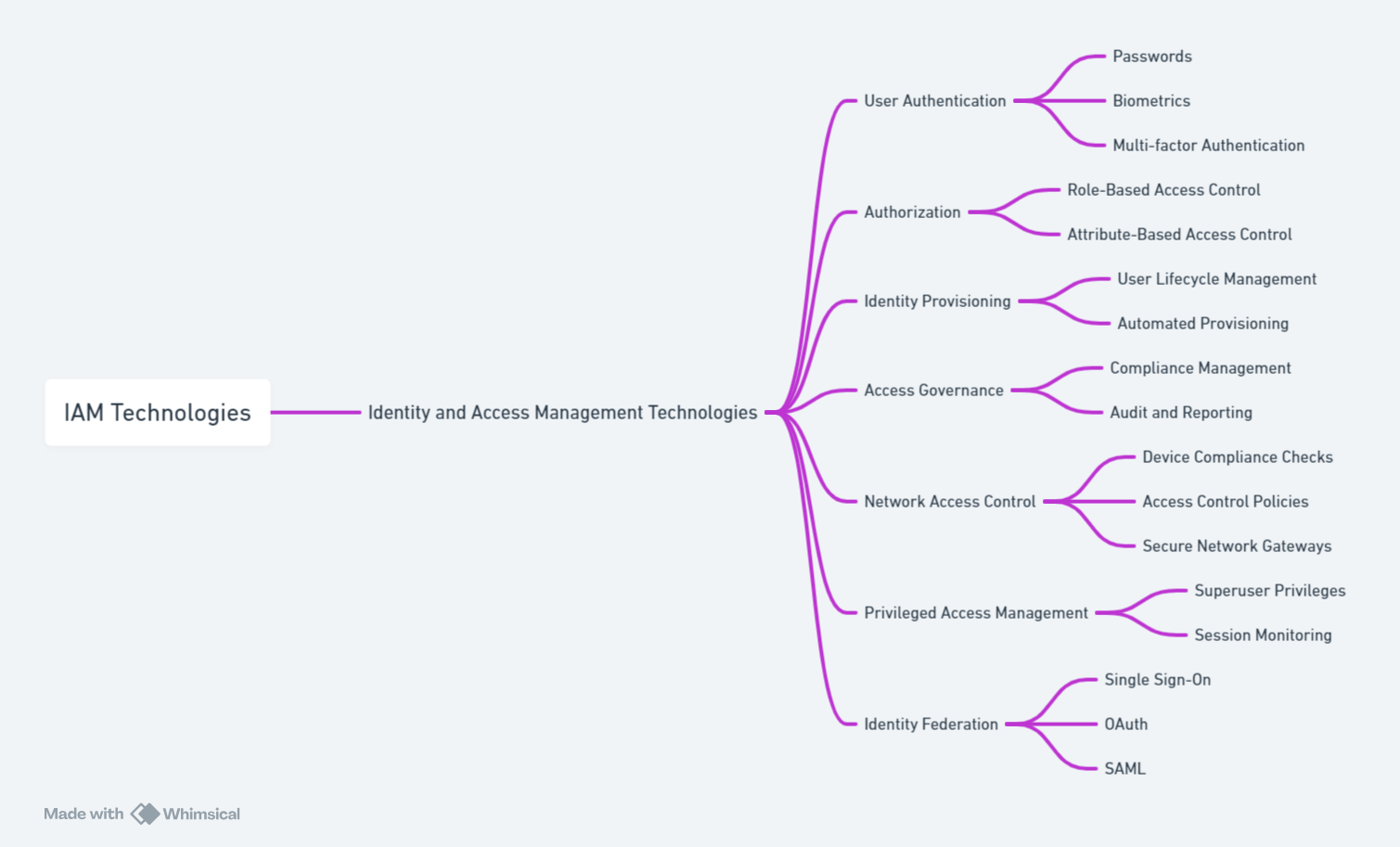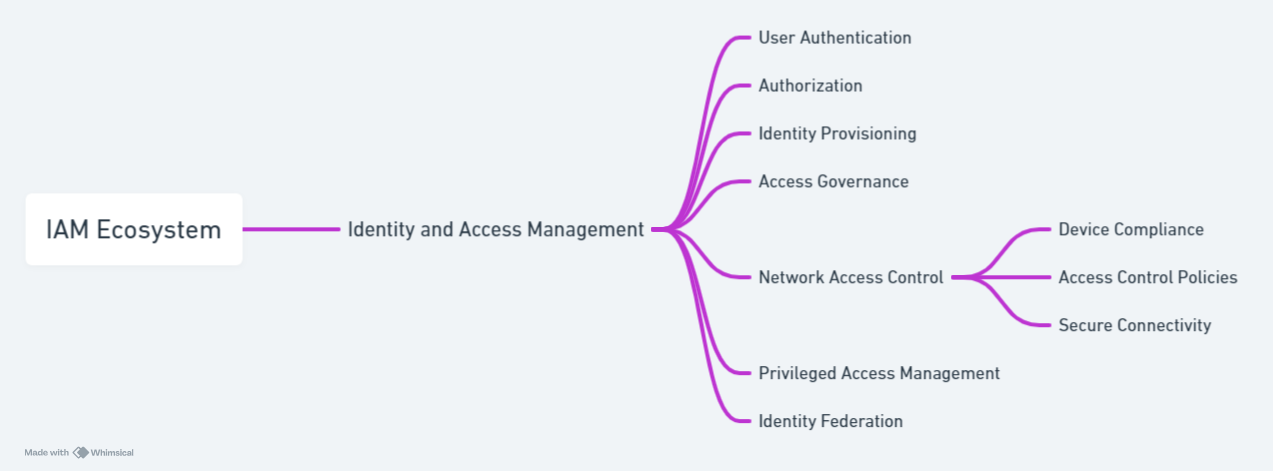One of the most critical components of a robust security strategy is Identity and Access Management (IAM). Within the IAM framework, Network Access Control (NAC) plays a pivotal role in ensuring that only the right entities gain access to network resources. This blog post explores how NAC integrates into the IAM ecosystem, enhancing security by controlling access based on identity.
Introduction to Identity and Access Management (IAM)
IAM is a framework that ensures the right individuals can access the appropriate resources at the right times for the right reasons. It involves various processes and technologies designed to manage digital identities and regulate user access within an organization. IAM systems provide administrators with the tools to change user roles, track user activities, create reports on those activities, and enforce policies on an ongoing basis. The core functions of IAM include authentication, authorization, and user management.

What is Network Access Control (NAC)?
Network Access Control (NAC) is a security solution that enforces policy on devices that attempt to access network resources. NAC can enforce policies across all users and devices, ensuring compliance with security policies before access is granted. It verifies the security posture of the device, determining whether it should be allowed on the network, placed in a quarantined area, or denied access outright. This capability makes NAC a crucial subset of the broader IAM framework.
The Role of NAC in IAM
The integration of NAC into the IAM ecosystem enhances the security posture of an organization by adding a layer of defense that controls access at the entry point – the network. Here’s how NAC fits into IAM:
- Authentication and Authorization: While IAM manages user identities and controls what users can do within a system, NAC uses this identity information to make real-time decisions about network access. It checks credentials and ensures that the device complies with security policies, effectively linking a user’s identity with device security before granting network access.
- Policy Enforcement: NAC solutions enforce security policies across all connected devices. For instance, if a device does not have the latest security patches, NAC can deny access, require the user to update the device, or redirect the user to a remediation network where the necessary updates can be applied. This level of control is essential in preventing compromised devices from accessing sensitive resources.
- Visibility and Monitoring: NAC provides comprehensive visibility into every device connected to the network, regardless of whether access was granted or denied. This visibility is crucial for effective network management and security, allowing administrators to monitor connections in real-time and respond to potential threats more quickly.
- Compliance and Posture Assessment: Many organizations are subject to regulatory requirements that dictate stringent access controls and security policies. NAC helps in maintaining compliance by ensuring that all devices meet the necessary standards before they are allowed network access. This ongoing assessment of device posture against compliance standards is a key function of NAC within the IAM ecosystem.
Benefits of Integrating NAC with IAM
Integrating NAC with IAM offers numerous benefits that enhance organizational security:
- Strengthened Security: By linking device security with user identity, organizations can ensure a more comprehensive security approach that mitigates the risk of data breaches.
- Enhanced Compliance: Automated compliance functions help organizations meet regulatory requirements more efficiently and with less administrative burden.
- Improved Network Visibility and Control: Real-time visibility into the devices on the network allows for better control and faster response to security incidents.
- Scalability and Flexibility: As organizational needs change, NAC can scale and adapt to new security policies and standards, supporting a dynamic security environment.
NAC is a vital component of the IAM ecosystem that extends the reach of traditional IAM functions to the network perimeter. By controlling access based on both user identity and device compliance, NAC enhances an organization’s ability to defend against both internal and external threats. As cyber threats continue to evolve, the role of NAC in IAM will remain indispensable in creating a secure, compliant, and efficient IT environment.
Try Portnox Cloud for Free Today
Gain access to all of Portnox's powerful zero trust access control free capabilities for 30 days!








